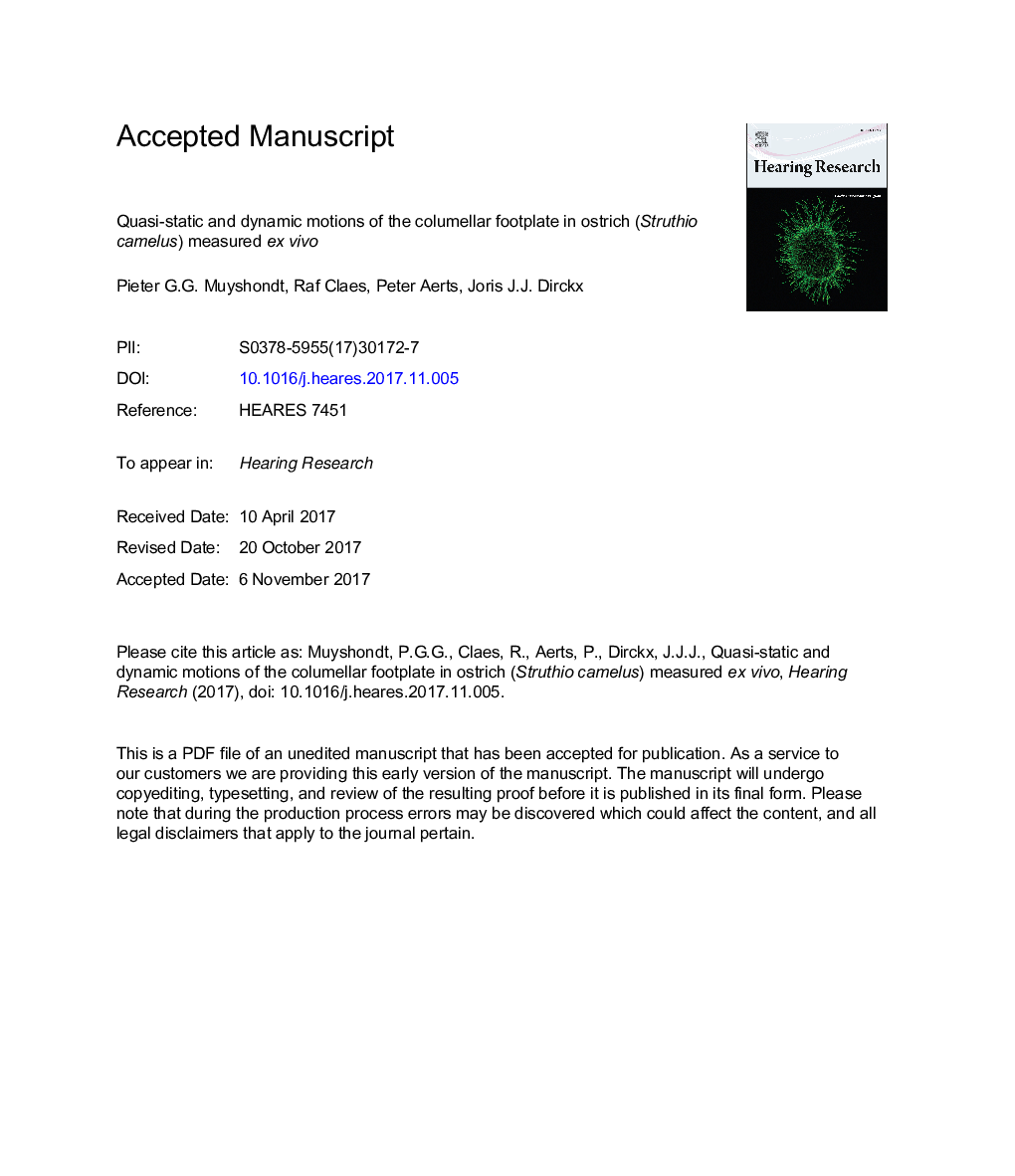| کد مقاله | کد نشریه | سال انتشار | مقاله انگلیسی | نسخه تمام متن |
|---|---|---|---|---|
| 8842435 | 1615543 | 2018 | 36 صفحه PDF | دانلود رایگان |
عنوان انگلیسی مقاله ISI
Quasi-static and dynamic motions of the columellar footplate in ostrich (Struthio camelus) measured ex vivo
دانلود مقاله + سفارش ترجمه
دانلود مقاله ISI انگلیسی
رایگان برای ایرانیان
کلمات کلیدی
موضوعات مرتبط
علوم زیستی و بیوفناوری
علم عصب شناسی
سیستم های حسی
پیش نمایش صفحه اول مقاله

چکیده انگلیسی
The nature of the movement of the columellar footplate (CFP) in birds is still a matter of ongoing debate. Some sources claim that rocking motion is dominant, while others propose a largely piston-like motion. In this study, motions of the CFP are experimentally investigated in the ostrich using a post-mortem approach. For quasi-static loads, micro-CT scans of ostrich heads were made under positive and negative middle-ear pressures of 1Â kPa. For dynamic loads, laser Doppler vibrometry was used to measure the velocity on multiple locations of the CFP as a function of excitation frequency from 0.125 to 4Â kHz, and digital stroboscopic holography was used to assess the 1D full-field out-of-plane displacement of the CFP at different excitation frequencies. To expose the CFP in the experiments, measurements were made from the medial side of the CFP after opening and draining the inner ear. To determine the influence of the inner-ear load on CFP motions, a finite element model was created of the intact ostrich middle ear with inner-ear load included. For quasi-static loads, the CFP performed largely piston-like motions under positive ME pressure, while under negative ME pressure the difference between piston and rocking motion was smaller. For dynamic loads, the CFP motion was almost completely piston-like for frequencies below 1Â kHz. For higher frequencies, the motions became more complicated with an increase of the rocking components, although they never exceeded the piston component. When including the inner-ear load to the model, the rocking components started to increase relative to the piston component when compared to the result of the model with unloaded CFP, but only at high frequencies above 1Â kHz. In this frequency range, the motion could no longer be identified as purely piston-like or rocking. As a conclusion, the current results suggest that CFP motion is predominantly piston-like below 1Â kHz, while at higher frequencies the motion becomes too complicated to be described as purely piston-like or rocking.
ناشر
Database: Elsevier - ScienceDirect (ساینس دایرکت)
Journal: Hearing Research - Volume 357, January 2018, Pages 10-24
Journal: Hearing Research - Volume 357, January 2018, Pages 10-24
نویسندگان
Pieter G.G. Muyshondt, Raf Claes, Peter Aerts, Joris J.J. Dirckx,